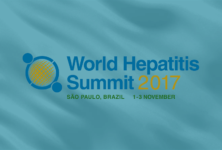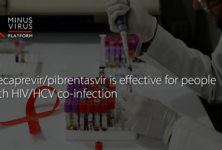Central Asia and the Russian Federation face a major intra-regional migration flow, home, as it is, to one of the largest labor migration corridors in the world, with hundreds of thousands of migrant workers moving from Central Asian countries to the Russian Federation and to Kazakhstan each year.[1] This migration flow of further concern given migrants’ increased vulnerability and poor access to HIV and TB prevention and care in host countries.
The Eastern Europe and Central Asia region is home to the fastest growing HIV epidemic in the world. Over the last five years, the number of new HIV diagnoses has more than doubled in Eastern Europe. In Russia alone, it is estimated that over a million people are living with HIV compared to around 250 000 a decade ago.[2] Nine Eastern European and Central Asian countries are also among WHO`s global list of Multidrug Resistant Tuberculosis (MDR-TB) high burden countries.[3]
In Kyrgyzstan, Tajikistan, Uzbekistan and also Armenia, substantial parts of the population are migrating to neighboring Kazakhstan and the Russian Federation for work purposes. Migration is clearly recognized as a risk factor for TB, MDR-TB[4] and HIV[5]. High mobility and seasonal migration patterns associated with poor living and working conditions, are contributing factors towards increasing migrants’ vulnerability and exposure to HIV and TB in the host country where they often experience significant barriers in accessing healthcare services.
For instance, over sixty percent of people who have been detected as HIV-positive in the last three years in Armenia, have, at one point, migrated to the Russian Federation for work. Non-governmental organizations in Kyrgyzstan and Tajikistan report evidence of a growing number of HIV infections among spouses of men who return from labor migration.
A recent report from the Central Tuberculosis Research Institute of the Russian Academy of Medical Sciences indicated that the proportion of TB and MDR-TB among migrants is 2.5 higher than in the general population.[6] Reduced access to health services and the fear of deportation if diagnosed with TB and HIV means that many diagnoses are being hidden or delayed.
Today, only a minority of HIV-positive migrants in the Russian Federation is accessing antiretroviral therapy (ART), while about 10 per cent of migrants are being tested for HIV and TB.[7] Despite pre-departure screening practices in the region for those requesting work authorization, many labor migrants are entering Kazakhstan and the Russian Federation without proper documentation in as much as there are visa-free travel agreements between countries. Scarce data on migrants’ health is an additional barrier to understanding how this group is affected by these diseases.
Notwithstanding, despite the barriers, there are also signs of cautious progress.
In the last few years, Kazakhstan has changed its policies, now ensuring access to full TB treatment for migrants irrespective of their legal status – and to MDR-TB treatment until the point that patients become sputum-negative. Although these clearly are progressive policies, many problems remain, including the conditions under which patients returning to their country of origin have to continue treatment to the end and the complexities of the patient referral system.
Under the auspices of the Kazakh Ministry of Health, with the support of the Global Fund to Fight AIDS, Tuberculosis and Malaria, bilateral agreements are being negotiated between Kazakhstan-Kyrgyzstan and Kazakhstan-Tajikistan on the access of migrant workers to TB care and treatment.
There is also progress in the Russian Federation around policies of both screening and requiring health insurance for migrants prior to entry on its territory. These policies allow for access to care of documented migrants at the site where they have registered for work. The downside to this measure however, is that many people are, however, emigrating for short period of times outside the registration system.
To reverse the rising HIV and MDR TB epidemics, the region will need to move forward on a number of fronts:
Firstly, there must be a halt to the deportation of migrants based on health status in the countries where it is still in practice. Currently, in too many instances in the region, a diagnosis of TB, MDR-TB or HIV means deportation, a practice that is widely known to be ineffective to public health, violate human rights, and may lead to drug resistant forms of infection.
Secondly, the region needs to ensure migrants’ have access to HIV services, including ART, and to full course TB/MDR-TB treatment in the host country. It will be vital that a funding mechanism be established to cover HIV and TB treatment costs for migrants who choose to stay in the host country to be treated.
Lastly, national and regional responses around infectious diseases like HIV and TB urgently need to be reviewed to include migrants as a vulnerable group.
It is no exaggeration to say that unless we see collective movement around the above fronts, all the ingredients of a brewing regional public health crisis will continue to bubble away.
By Michel Kazatchkine
[1] IOM (2015) Mapping on Irregular Migration in Central Asia 2014, Astana, 2015. [2] Unaids (2016) Prevention Gap Report. [3] WHO (2016) Global Tuberculosis Report 2015. [4] Dara M et al. (2012). Minimum package for cross-border TB control and care in the WHO European region: a Wolfheze consensus statement. The European Respiratory Journal, 40(5):1081-90. Published online 2012 May 31. Available at:https://www.ncbi.nlm.nih.gov/pmc/articles/PMC3485571/ [5] Unaids (2014) The Gap Report. [6]Demikhova O, Nechaeva O (2016) Access of Migrant to Services on Early Detection, Diagnosis, Prevention and Treatment of Tuberculosis and Tuberculosis Associated with HIV Infection, Moscow, (In Russian : Вопросы доступа мигрантов к мероприятиям по раннему выявлению, диагностике, профилактике и лечению туберкулеза и туберкулеза, сочетанного с ВИЧ-инфекцией в странах СНГ) Available at : http://mednet.ru/images/stories/files/CMT/migranty.pdf [7] Demikhova O, Nechaeva O (2016) Access of Migrant to Services on Early Detection, Diagnosis, Prevention and Treatment of Tuberculosis and Tuberculosis Associated with HIV Infection, Moscow, (In Russian : Вопросы доступа мигрантов к мероприятиям по раннему выявлению, диагностике, профилактике и лечению туберкулеза и туберкулеза, сочетанного с ВИЧ-инфекцией в странах СНГ) Available at : http://mednet.ru/images/stories/files/CMT/migranty.pdf

 ПОИСК ПО САЙТУ
ПОИСК ПО САЙТУ  поиск по ресурсному центру
поиск по ресурсному центру 



